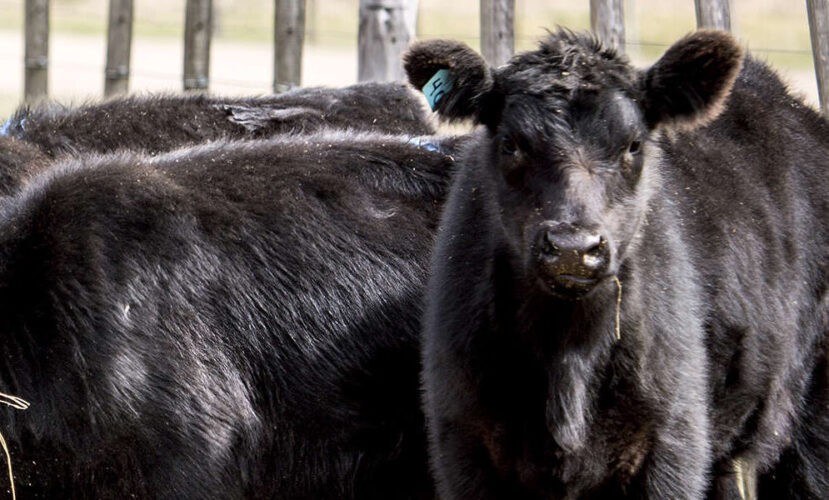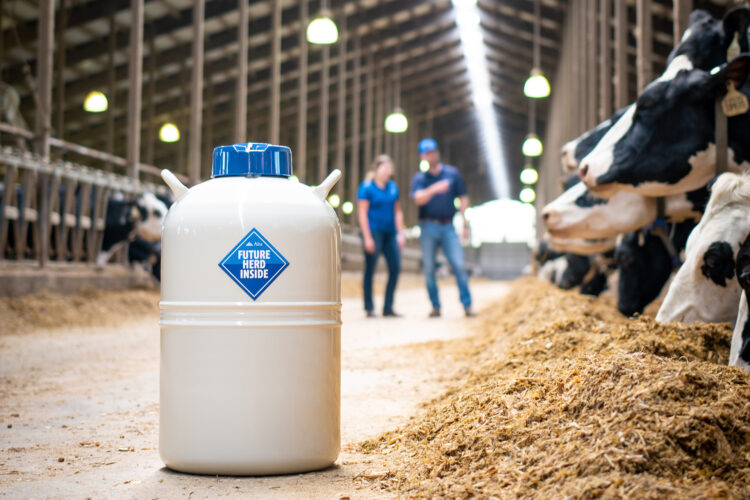“Give me a bull that’s over 1,000 pounds of milk and positive for DPR.”
Does this sound like you describing sire selection criteria for your dairy? If so, you are among the many other dairy producers who are leaving extra pounds of milk and additional pregnancies on the table.
The traditional threshold method can be a risky approach to selecting bulls when you are aiming to maximize genetic progress. Setting a minimum level for any given trait and completely eliminating sires that fall short of those minimums means you could be missing out on a number of bulls that could actually help propel your genetic level to new heights.
A genetic threshold versus a genetic plan
Take for example, the old-fashioned threshold method for choosing the bulls you pick. If you direct your AI rep to drop off five bulls that are over 1000 pounds of milk and over 0.0 for DPR, he may leave you with a group of sires like those in Table 1 below.
Since your AI rep did his/her job and followed your wishes, you can see the averages for milk and DPR are pretty good – even above your set thresholds. But is that really the best group of bulls you can get?
If you reset your thought process for sire selection, you can choose to set a genetic plan that aligns with your goals. The previously mentioned thresholds would equate to a genetic plan with about 50% emphasis on production traits, 50% emphasis on health traits, and 0% emphasis on conformation or type traits.
By using this 50-50-0 genetic plan for selecting your bulls rather than limiting yourself by thresholds, you could end up with a genetic package like the five bulls shown in Table 2.
| Table 1. Sire | PTA Milk | DPR |
| Al | 1181 | 0.6 |
| Bob | 1143 | 0.1 |
| Carl | 1140 | 0.6 |
| Doug | 1027 | 0.1 |
| Ed | 1023 | 0.1 |
| Average | 1103 | 0.3 |
| Table 2. Sire | PTA Milk | DPR |
| George | 2207 | -0.1 |
| Henry | 2171 | -0.1 |
| Ivan | 1986 | -0.1 |
| Jack | 972 | 5.2 |
| Kurt | 900 | 4.6 |
| Average | 1647 | 1.9 |
Not even one of the five bulls selected based on the genetic plan fit both the criteria of being over 1,000 pounds of milk and being positive for DPR, but you can see they just barely miss the mark on one trait or the other.
Looking at Jack, you can notice that by sacrificing a few pounds of milk below your 1000 pound threshold, you gain an extra 5.2 points for DPR. And even though George and Henry both fall 0.1 short on their DPR values, they provide well over double the pounds of milk that your thresholds would have dictated.
So if you look at the average genetics of this group, they are above and beyond what you achieve with the group of sires that meets both criteria. In this case, by setting a genetic plan to select your bulls, you will gain almost 550 additional pounds of milk and see nearly a two percent higher pregnancy rate than by stating clear-cut threshold limits.
The tables above illustrate that setting a genetic plan to put emphasis on the traits that matter to you can boost your genetic levels well beyond what you achieve with restrictive thresholds.
Genetic plans – not just for sire selection
When setting a genetic plan, the most common focus is on sire selection. However, with genomic testing and various reproductive technologies readily available, many dairy farmers also rank females to determine which cows or heifers should receive sexed semen versus convention semen, or to know which animals are the best candidates to flush, versus which should serve as recipients.
If you rank your heifers and cows, it is important to remember to use the same genetic plan on the female side as you use for selecting your sires. Otherwise you will lose the full effect of the genetic progress you could make with the sires you select.
If you select your sires based on a genetic plan of 50% production, 50% health and 0% type, but then you rank females by TPI, NM$, or a completely different index your overall genetic progress toward your goals will suffer. A mixed approach will slow your progress and lessen your results.
Genetic thresholds versus genetic plans In a nutshell
Maximize genetic progress in your herd by setting your own customized genetic plan to emphasize the traits that matter to you, rather than limiting your options with strict trait thresholds. To drive your genetic progress even further, make sure the genetic plan you put in place for sire selection matches the one you also use to rank your females.





